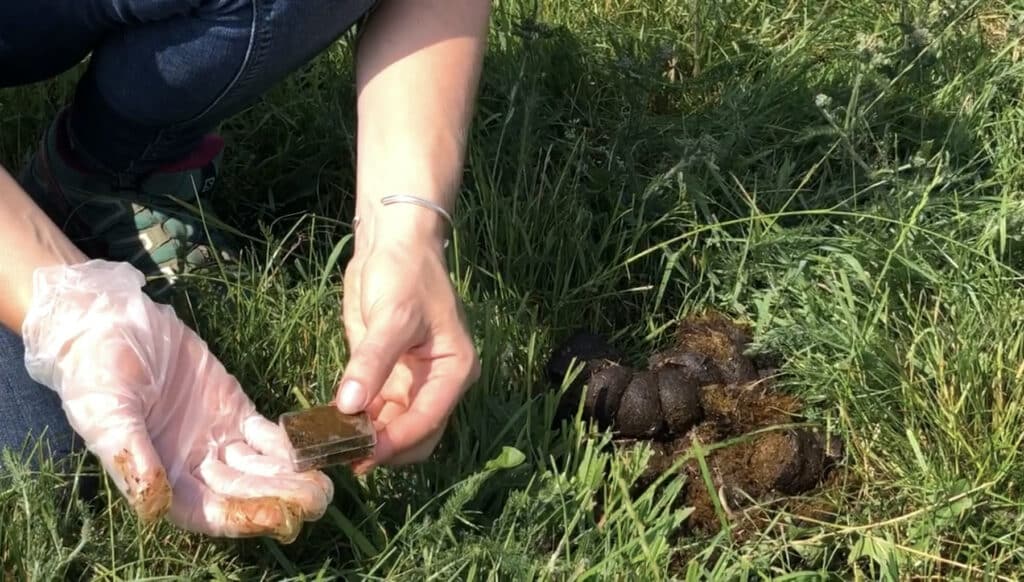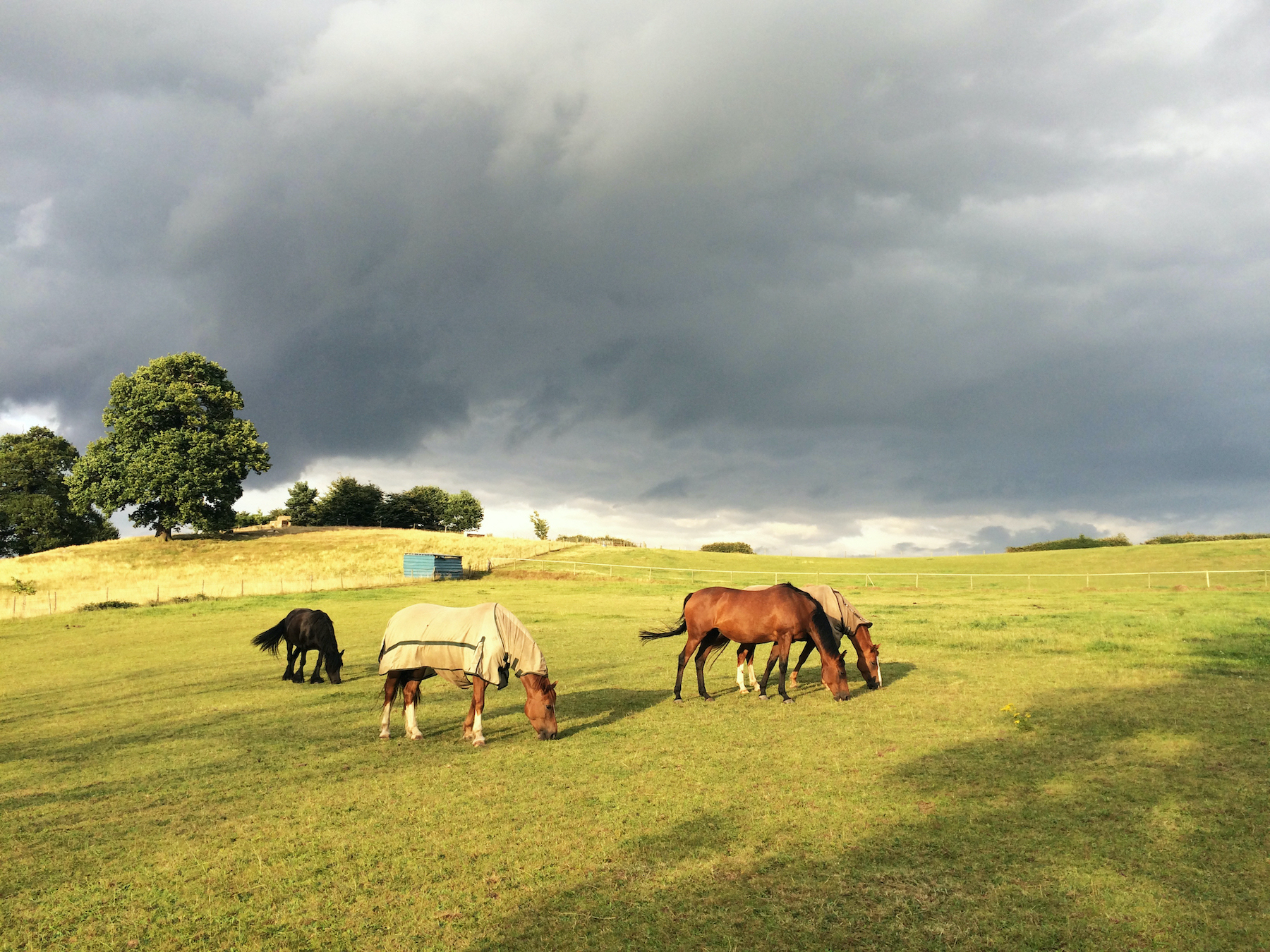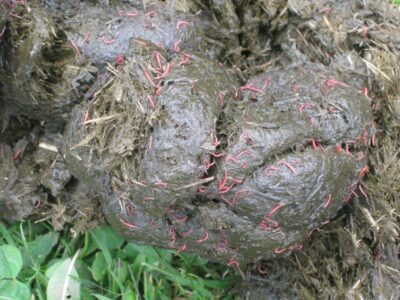Veterinary, Worming
How and when to worm a horse
Rebecca Watson demystifies some common misconceptions around deworming horses
We all know that worms are bad, right? We have all heard the list of health problems that are associated with heavy worm burdens in the horse:
- Colic
- Diarrhoea
- Anaemia
- Weight loss
- Lethargy
- Poor coat
- Anorexia
It is easy to purchase horse wormers online so it’s easy to deal with the problem – we just buy the strongest one, the one that does everything and administer it, to every horse on the premises, right? – Wrong. Let’s discuss how to worm a horse correctly, and especially what wormer you should use.
Parasite resistance to deworming compounds is becoming a very real threat to our horse population. Contrary to popular belief, deworming strategies are not about eliminating parasites completely, this has proven impossible. The old thinking of blanket worming every horse on the premises at certain times of the year, rotating the compound that you are using, has been shown to be ineffective – particularly if you are already experiencing resistance to certain compounds on your farm. You are not only wasting your time and your money but, increasing the danger of your horse becoming resistant to any dewormer, which means when he really needs treatment it will be ineffective and possibly, fatal.
An evidence based approach to deworming horses is recommended; properly timed treatments with effective deworming products (anthelmintics) for horses, administered at certain times of the year – to correspond with the parasite lifecycles, aimed at the appropriate individuals in the herd (the ones shedding large amounts of worm eggs).
A small percentage of horses harbour the majority of the worm population (approximately 20% of horses harbour approximately 80% of the parasite population), thus the common practice of recommending the same treatment programme for all horses in the herd; prophylactic treatment without performing diagnostic testing, or monitoring efficacy of treatments is poor practice and helps increase parasitic resistance.
Examples of veterinary diagnostic tests for intestinal parasites:
- Faecal worm egg counts (FWECs) for strongyles
- Antibody testing (either in blood or saliva) for tapeworm in horses
Performing FWEC reduction tests will help to determine whether or not anthelmintics are effective (measure FWEC both before and 14 days after anthelmintic treatment). There should be a high reduction in the amount of worm eggs found 14 days after treatment (90-95%). Failure of the drugs to achieve high levels of egg reduction following treatment indicates the presence of anthelmintic resistant parasites.

Refugia
It is widely believed that horses should carry a worm burden of absolute zero. This is not true, horses evolved with their intestinal worms and small numbers of most worms do not cause any significant health problems, but rather help to stimulate immunity that serves to protect the horse from the establishment of a more serious worm burden. Additionally, small numbers of eggs from untreated horses will help to slow anthelmintic resistance by increasing refugia.
Refugia is the name given to the worm population that is susceptible to anthelmintics, thus diluting the numbers of resistant worms. Refugia are important soldiers in our battle against internal parasite infestations in the horse.
How can we encourage refugia in the worm population on our farms?
- Deworm according to FWEC indicators
- Where appropriate – leave a portion of the herd untreated – those horses with low FWECs and tapeworm saliva tests
- Manage your horses and pastures in a way that reduces the need for chemical wormers
Careful pasture management can help break the lifecycle of parasites, thus reducing the infective worm population and lessening our reliance on anthelmintics.
- Do not overstock paddocks
- Regularly remove horse droppings from paddocks
- Cross graze the paddocks with cattle or sheep
- Rest pasture, ideally for three months at a time Combine harrowing with resting
Be accurate
Another important factor in the battle against anthelmintic resistance is to ensure that you accurately dose each horse according to its body weight. Either accurately measure using weigh scales or use one of the commercially available ‘weigh tapes’ and round up the specified weight to the nearest 50kg.
It is all too easy to underdose, particularly with ponies who can be deceptively heavy, despite their short stature. Trying to make worm doses go further by inaccurately squeezing two ‘under’ doses out of one tube is not saving you money. If you are underdosing, you may as well be emptying the dewormer on the ground.
Many, many of tubes of anthelmintics are being administered every year that are killing very few parasites, either because there are very few worms in the horse to kill or, because the dewormer is ineffective because of resistance.
Protect the herd – screen new horses
New horses brought onto the premises should be quarantined and a FWEC performed to test parasite status. They should be treated for round and tapeworms, if indicated, and then stabled for 48 hours. This will prevent them from passing any eggs onto the pasture and so infecting the existing horse population.

A FWEC should be performed before and 14 days after every worm dose is administered, to check for efficacy of the worm product used. Minimally, an additional FWEC should be taken at least once during the grazing season to check the level of parasite burden on the farm and between individual horses.
When performing FWECs in warm weather conditions ensure samples are fresh and refrigerate them as soon as possible; warm environmental conditions will cause eggs to hatch prematurely and give you false negatives. Collect a minimum of 5g (or a good teaspoonful) of droppings from each individual horse.
Remember a FWEC will not detect encysted cyathostomins, bots or tapeworm. Pinworms are also not reliably detected in standard FWECs as they do not consistently lay eggs. It is possible for horses to be infected with any variety of these parasites and have a low (<200 epg) FWEC.
- Significant parasitic pathogens of the horse are:
- Small Redworms (Cyathostomum spp.)
- Tapeworm (Anoplocephala perfoliata)
- Large Redworms (Strongylus spp.)
Large strongyles are rarely found in well managed horses and require only once or twice-yearly treatment. In foals, all of the above plus, roundworm (Parascaris equorum) are significant. Horses generally develop an immunity to roundworms after around 6 months of age.

Other less common parasites are Gasterophilus spp. (bots), Oxyuris equi (pinworm), Onchocera spp., Trichostrongylus axei, Dictyocaulus arnfeldi (lungworm) and Strongyloides Westeri. If any of these less important parasites are diagnosed, they should be treated on a case by case basis; it makes no sense to treat for these organisms if there is no evidence of infection. Your veterinary surgeon will be able to guide you through treatment options.
The choice of parasite treatment has become very complex. The take home message is that there is no such thing as a one size fits all deworming programme, achieving optimal parasite control has become a challenge that demands veterinary involvement; tailored to individual horses, farms and yards.
An evidence-based approach is best, not just for your pocket, but your horse. Ask yourself:
- Is there clinical justification for treating my horse?
- Which parasites are we trying to eliminate? What stages of the parasite are likely to be present?
- Which anthelmintic is most appropriate?
- How confident am I that this drug will work as expected?
- What other parasite control measures can I implement?
All Images Courtesy Of Westgate Laboratories
